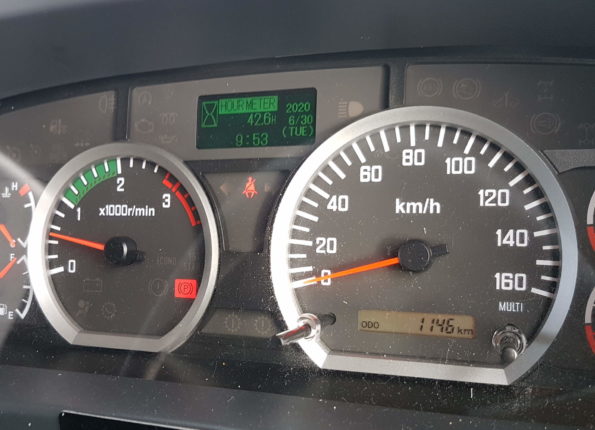Idling is when you are stationary but your engine is still running. It creates financial and environmental challenges for companies and individuals.
Excess fuel use
It’s a huge cause of unnecessary fuel use and engine wear for commercial and private vehicles. According to brochures of Ford Power Stroke Diesel vehicles, one hour of idling creates as much wear on an engine as driving 25 miles or 40km.
Many trucks are left idling for hours a week. Idling fatigues the oil and leads to wear on engine components. It therefore shortens the time required between services, or makes it more likely that an engine service is well overdue if you wait for the suggested odometer reading.
Some vehicle manuals make suggestions as to maximum service intervals, for example, 8000km, 200 engine hours or 1000 litres of fuel, whichever comes first. But many vehicles don’t measure engine hours and most drivers don’t keep a track of how much fuel they are using.
If a vehicle is idling for 2 hours a day, 5 days a week (which isn’t uncommon for some trucks), that’s the equivalent of 400km per week or over 20,000km per year of unnecessary wear.
Also, an idling vehicle uses between 0.5 litres to 4 litres of fuel per hour, depending on the engine size, how warm the engine is and whether any auxiliary items are being used (e.g. air conditioning).
Noise pollution
Idling vehicles are annoying for people who have to be near them. There are noise regulations which define restrictions. The noise from an idling vehicle must not be heard in a habitable room between 8pm to 8am on weekends and public holidays and 8pm to 7am on weekdays. You can report it to your local council, use the noisy vehicle reporting form or contact your local police station on 131 444. The penalty is $200 for an individual. Constant idling noise can prevent you or other drivers from sleeping in the cab, leading to driver fatigue. Fatigue training courses should be completed by all commercial drivers.
Air pollution
Burning one litre of diesel creates around 2.68kg of carbon dioxide while burning one litre of petrol is approximately 2.31kg. On top of that are various other noxious gases and particulates which contribute to respiratory illness. Calculate how much carbon dioxide your fuel use creates.
Impact on business
Many new commercial vehicles have onboard data logging and can provide reports showing how much idling vs driving.

As you can see from this image, the total idle time was over 6 hours but the driving time was just under 4 hours. This resulted in 12 litres of fuel used during idling. The equivalent wear would be around 240km of driving, more than the truck was actually driven (192km).
You can calculate the potential wasted costs from reports like this.

What are genuine reasons for idling?
- Waiting in stationary traffic (with the intention to keep moving)
- Being directed by a police officer
- Idling is required for part of a pre-start inspection
- Bringing up air pressure in a heavy vehicle
- Cooling down a turbocharger after hard driving
- Servicing or testing the vehicle
- Recharging a battery
- Operating in-cab equipment necessary for the driver’s health or wellbeing (e.g. air conditioning or heater while sleeping in the cab)
- Operating auxiliary equipment using power take-off (PTO)
- Maintaining the temperature of animals or goods carried in the vehicle.
What clauses do you need in your idling policy?
The maximum time a vehicle should be left idling in normal situations, e.g. 3 minutes for heavy vehicles and 30 seconds for light vehicles.
Guidelines for purchasing vehicles with idle reduction technology.
Exceptions to the rule (e.g. any of the options above for idling in genuine situations)
How should you implement your idling policy?
It is arguably better to avoid having a policy if possible, and instead use education, technology and other forms of motivation.
There are many statistics available online regarding fuel use for the different types of vehicles you’ll use in your business. If you can get absolute idling data like the diagram above, this will be good ammunition as you can calculate how much money idling is costing your company and how much pollution you are creating.
Meet with your drivers and driver representatives and find out why they are idling. It may be that they are doing lots of deliveries and idling is just a convenience. It may be that they are leaving their vehicle expecting to only be away 30 seconds, but frequently get held up.
Dispel any myths about turning the engine off and on again being bad for it – once you’ve left your engine idling 10 seconds, you’ve created more damage and used more fuel than stopping and starting it.
Agree targets for a reduction in fuel use and determine whether you want to share those savings with benefits for the drivers. This could come in the form of cash incentives, improvements to vehicles or facilities, additional training, etc.
Consider training for drivers that struggle to achieve measurable savings.
